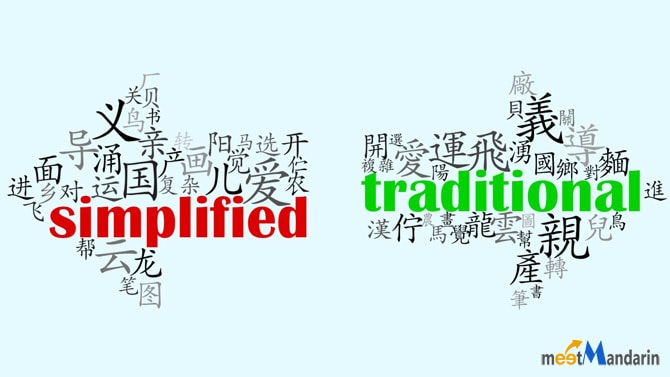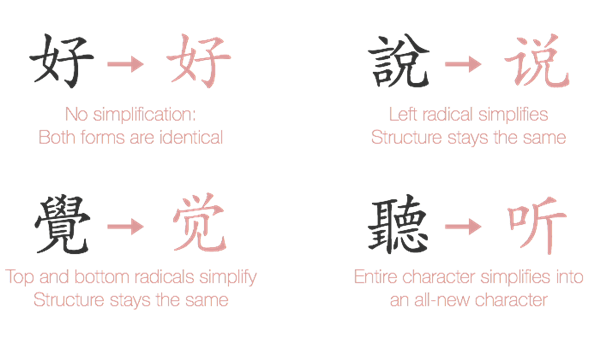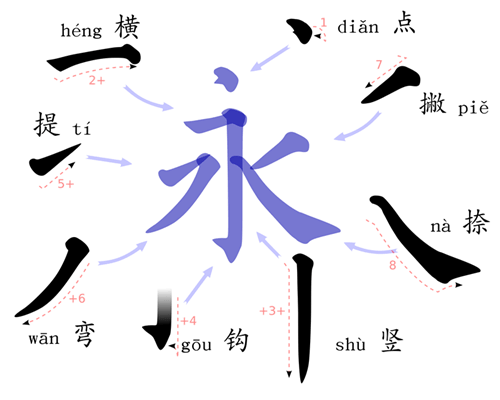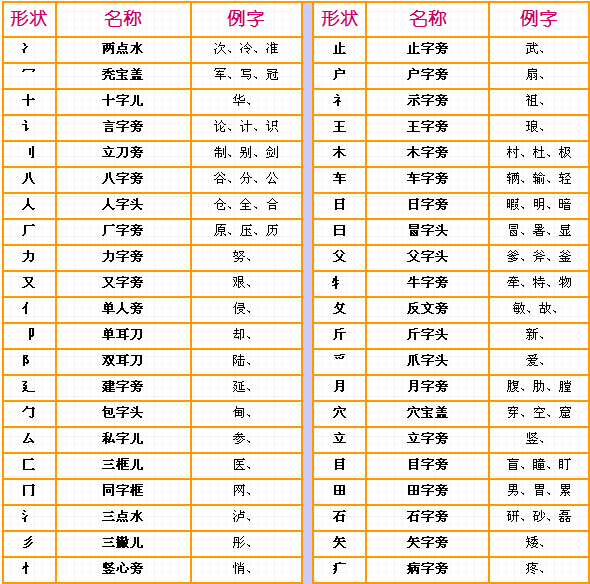All You Need to Know about Chinese Characters
Learning Chinese characters will not only help you better understand Chinese language, but its culture, because it is said that each Chinese character has a story behind it. In this article, we will answer some of the most commonly asked questions and share with you useful tips to get started writing Chinese as a beginner. Meanwhile, if you are learning Chinese character and pinyin at the same time, you may want to try our Chinese to Pinyin Converter, a useful tool to change characters to pinyin with tone marks.
Simplified or Traditional Chinese Characters?
“Simplified Chinese characters or traditional Chinese characters, which one should I learn?” Our teachers have been asked very often by this question. There is no straight-forward answer. It depends on what your needs are for learning Chinese and where you are going to use it. By knowing the following difference, it should be easier for you to decide which one is better for you to learn.

Simplified or Traditional?
Mandarin Chinese typically has two forms of writing system: Traditional Chinese and Simplified Chinese. Simplified Chinese is a simpler version of Traditional Chinese. Despite some characters in both versions are exactly the same (e.g. 大, 小, 中, etc), most simplified Chinese characters observe a reduction of the number of strokes. The simplified form is now the standard writing system in the mainland of China while the traditional form is mainly used in Taiwan, Hong Kong and some other places.

A Comparison of Simplified and Traditional Chinese
Generally speaking, simplified Chinese characters are easier to learn and there is a trend towards using simplified Chinese. If you are a beginner, the simplified Chinese characters are highly recommended to start with.
How Many Characters Do I Need to Learn?
While there are over 50,000 characters, you don’t need to learn them all! The number of commonly-used Chinese characters is only a small portion of the total. For those who are learning Chinese as a second language, knowing just 1,000 characters will enable you to understand approximately 80% of written Chinese. A number of 2-3,000 characters is way enough to be able to read a Chinese newspaper.
The thing is that no one learns Chinese for the single purpose of recognizing more and more characters, without being able to speak it. So, why not put aside the conception of number and let your characters grow step by step through the improvement of overall language ability?
Get Started as a Beginner - the Strokes!
When you first see a Chinese character, you may feel that it is made by a group of complex strokes that have no rules to follow and probably have no idea about how to write it. Actually every single Chinese character is formed by the stroke order in which the strokes of a Chinese character are written. The general principle of writing Chinese characters is from the top to the bottom and from the left to the right.
There are eight basic strokes in Chinese writing and when you master them, you are ready to go! (A compound stroke is produced when two or more basic strokes are combined in a single stroke written without lifting the pen from the paper.) The Chinese character “永” as in “永远 (forever)” is a special character that is composed of exactly all the eight basic strokes.

Chinese Character "永"
It’s necessary to know all the basic strokes in order to write Chinese, but it doesn’t mean you can learn Chinese characters by copying them stroke by stroke! Chinese characters are easy to remember once you break it down into components (not strokes), known as 部首 (bù shǒu).
For example, the Chinese character 休 "rest" is composed of 人 "person" and 木 "tree"; 好 "good" is composed of 女 "woman" and 子 "child".

Chinese Character Components and Examples
Most characters are built of components which represent physical things or abstract concepts. It’s always a good idea to learn what each of the components represents and try building up mental images featuring the components for each character. This is also proven an efficient way to learn Chinese characters.
Best Tips For Learning Chinese Characters Fast
Learning to write and read in Chinese can be as challenging as you think, but once you get on the right track, you will enjoy every second of learning it! If you have any good ideas or questions about learning Chinese characters, please leave us a comment. We’d love to hear from you!